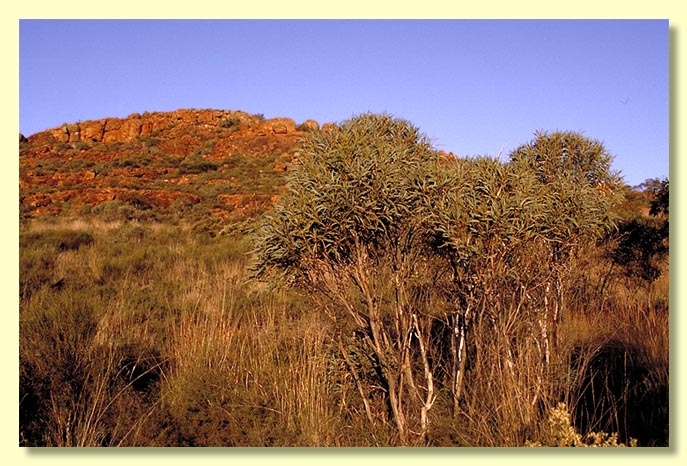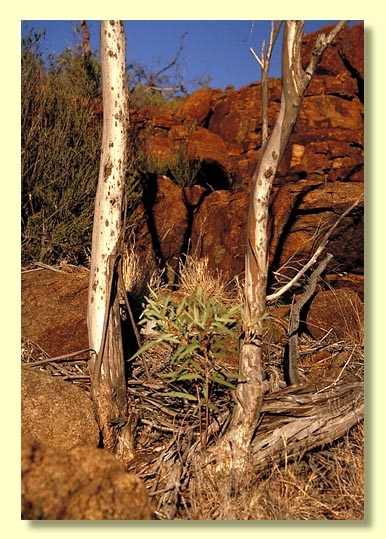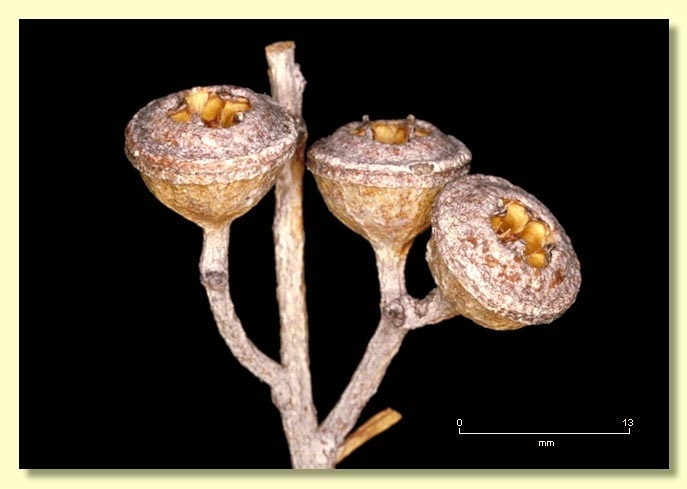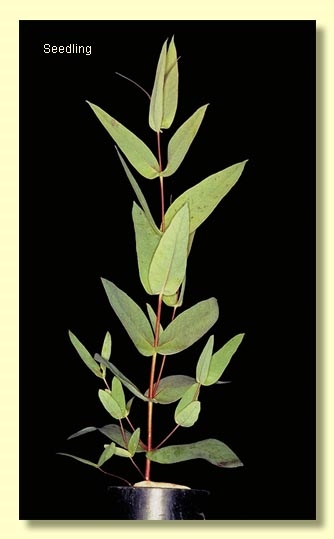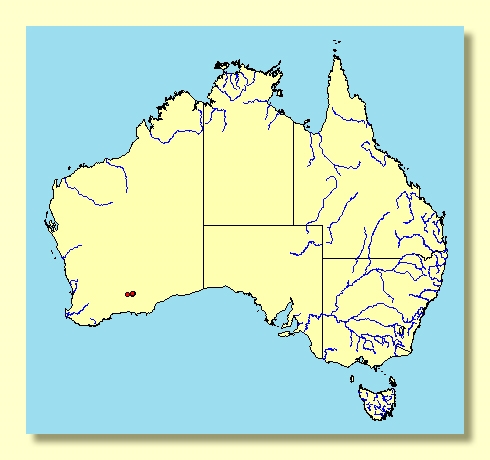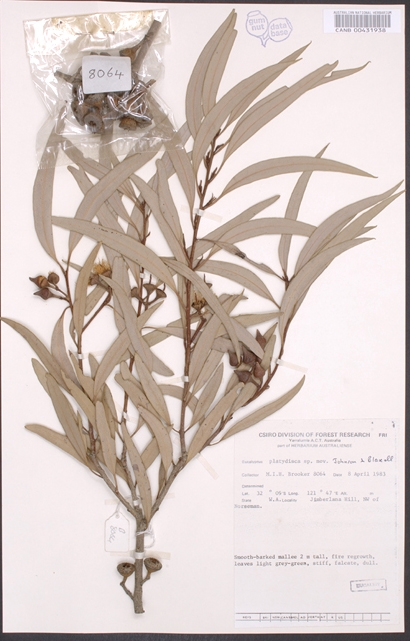Euclid - Online edition
Eucalyptus platydisca
Eucalyptus | Eucalyptus | Longistylus | Frutices | Diversiformae | Neuropterae
Bark smooth, mottled shades of pale and dark grey.
Branchlets lacking oil glands in the pith.
Juvenile growth (coppice or field seedlings to 50 cm): stems rounded in cross-section; juvenile leaves sessile to shortly petiolate, opposite, linear to narrowly lanceolate, 4–11 cm long, 0.5–1.5(3) cm wide, blue-grey to slightly glaucous.
Adult leaves stiff, erect, alternate, petioles 0.7–1.6 cm; blade linear to narrowly lanceolate, 6.2–12.3 cm long, 0.7–1.8 cm wide, base tapering to petiole, margin entire, apex acute, dull, bluish green, side-veins at an acute or wider angle to midrib, reticulation moderate, intramarginal vein remote from margin, oil glands island, irregularly shaped, or obscure.
Inflorescence axillary unbranched, peduncles 0.6–1.5 cm long, buds 7 per umbel, pedicels 0.2–0.7 cm long. Mature buds diamond-shaped, 1.2–1.7 cm long, 0.8–1 cm wide, scar absent, operculum single, conical or sometimes beaked, pink when mature, stamens irregularly flexed, anthers oblong, versatile, dorsifixed, dehiscing by longitudinal slits (non-confluent apically), style long and straight, stigma tapered, locules 3 or 4(5), the placentae each with 2 vertical rows of ovules. Flowers creamy white.
Fruit pedicels 0.3–0.7 cm long, cupular to obconical, 0.7–1.4 cm long, 1.1–1.6 cm wide, disc level or slightly raised and convex to oblique or flattish, valves 3 or 4(5), at rim level.
Seeds brown and virtually identical with the chaff particles, 1.5–3 mm long, pyramidal to D-shaped, dorsal surface smooth, hilum terminal.
Cultivated seedlings (measured at ca node 10): cotyledons reniform; stems rounded in cross-section, smooth to slightly warty or even slightly scabrid for the lower 5 internodes (variable); leaves opposite, sessile and amplexicaul for at least 11 nodes, broadly lanceolate, 5.5–9.5 cm long, 1.8–3.5 cm wide, lowest leaves discolorous and dark green, glossy, becoming dull and slightly grey-green up stem, concolorous after node 6.
Flowering has been recorded in April.
A mallee endemic to the southern goldfields of Western Australia, known only from the granite boulder-strewn slopes of Jimberlana Hill and Mt Norcott, north-east of Norseman. The stems are smooth and the adult leaves dull, blue-green.
In the classification of Brooker (2000) Eucalyptus platydisca would belong in belong in Eucalyptus subgenus Eucalyptus series Diversiformae subseries Neuropterae, a group of mallee species characterised by adult leaves held more or less erect, buds with a single operculum (hence no operculum scar), cuboid-oblong anthers that shed pollen by two separate slits, ovules arranged in two rows on the placenta, fruit cupular to obconical, pyramidal seed, and seedling and juvenile leaves opposite for many pairs.
E. platydisca is morphologically closest to the mallee E. diversifolia which differs in the mature adult leaves being glossy green, the smaller buds, smaller more cupular fruit and the coastal, sandy or limestony habitat from Toolinna (Western Australia) east to Cape Nelson (Victoria). E. platydisca also has some similarities in bud and fruit characters with two species from the Stirling Ranges, viz. E. pachyloma and E. erectifolia, but, unlike these two species, E. platydisca seed lacks the flanged margin and the buds are acutely conical (obtuse to bluntly conical buds in both E. pachyloma and E. erectifolia.)
Eucalyptus platydisca is listed as "Vulnerable" under the Australian Government Environment Protection and Biodiversity Conservation Act 1999 (EPBC Act). Further information may be found at this web address:
http://www.environment.gov.au/cgi-bin/sprat/public/sprat.pl

